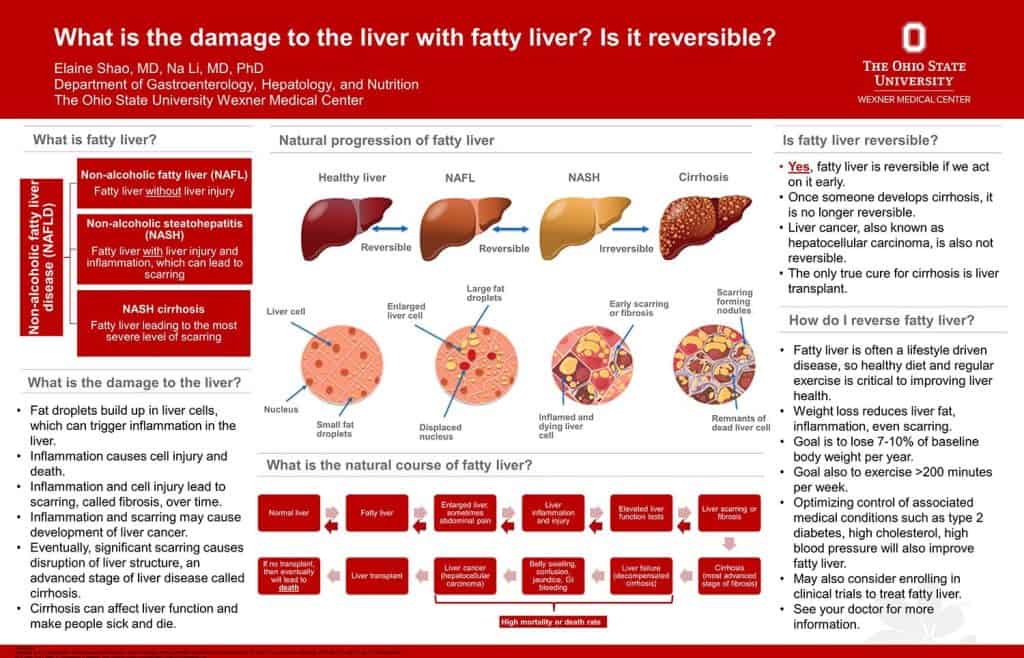What is the Damage to the Liver with Fatty Liver? Is it Reversible?
Elaine Shao, MD and Na Li, MD, PhD
The Ohio State University Wexner Medical Center
This presentation is an excerpt from the ALF 2021 Poster Competition. This competition showcases posters and a brief video created by early career investigators from across the country on six areas of educational focus: fatty liver disease, liver cancer, liver transplantation, pediatric liver disease, rare liver disease and viral hepatitis. Participants are tasked with translating complicated medical information into a poster which can be easily understood by patients or the public. Posters are reviewed by a formal panel of judges comprised of Medical Advisory Council members, Board Members and friends of ALF to select a winner in each category.

Fatty liver is when fat builds up in liver cells without another explanation, such as alcohol use. Nonalcoholic fatty liver disease (NAFLD) is an umbrella term that encompasses different stages in the progression of fatty liver. Nonalcoholic fatty liver (NAFL) is defined as fatty liver without injury to the liver. Some patients progress to nonalcoholic steatohepatitis (NASH), or fatty liver causing liver injury and inflammation. They can have elevated liver tests and enlarged liver. NASH can cause damage to liver cells over time, leading to scarring, or fibrosis. NASH cirrhosis is fatty liver causing advanced scarring of the liver, forming nodules and changing liver structure. This can affect the liver’s ability to function normally. Patients with cirrhosis can develop liver failure and liver cancer. Liver failure can present with jaundice, belly swelling, confusion, and bleeding from the gut. Patients with liver failure and liver cancer can have high death rates. Fatty liver is associated with obesity, high cholesterol, diabetes, and high blood pressure. The main treatment for fatty liver is weight loss and exercise. With weight loss, patients can decrease the amount of fat, inflammation, and even scarring of the liver. The goal is to lose 7 to 10% of body weight per year and exercise more than 200 minutes per week. The good news is that NAFL and NASH are reversible. However, once fatty liver has progressed to cirrhosis or liver cancer, it is no longer reversible. This is why it is important to make lifestyle changes and act on fatty liver early.
Last updated on December 1st, 2022 at 03:15 pm